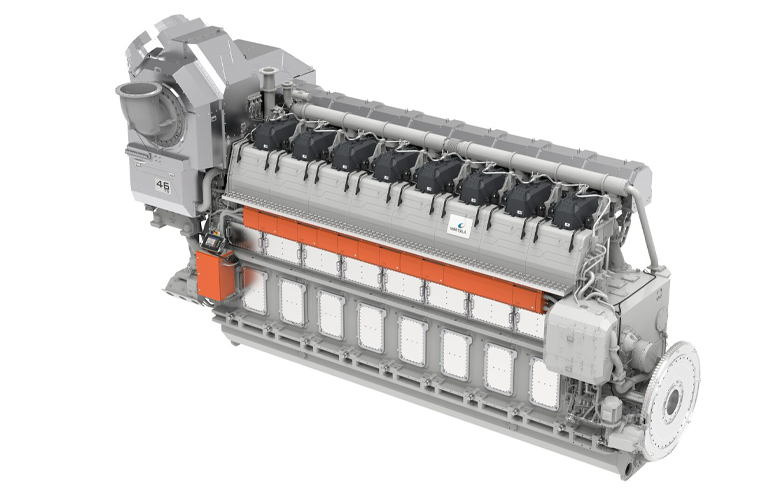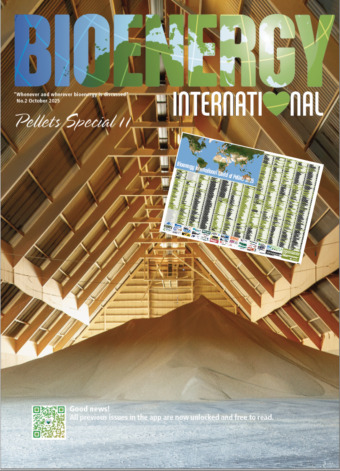Finland-headed technology group Wärtsilä Oyj has announced that it has introduced its NextDF methane slip reduction technology for a third engine, the Wärtsilä 46TS-DF dual-fuel engine. While operating on liquefied natural gas (LNG), the Wärtsilä 46TS-DF engine with NextDF feature reduces methane emissions to less than 1.4 percent of fuel use across all load points, achieving as low as 1.1 percent in a wide load range.
This is nearly three times lower than the default methane slip factor of 3.1 percent, specified in the FuelEU Maritime regulation and International Maritime Organization (IMO) Lifecycle Guidelines for Otto-cycle four-stroke dual-fuel engines.
Through improvements made to the combustion control and engine performance optimization, the new feature also minimizes nitrogen oxide (NOx) and carbon dioxide (CO2) emissions.
Transition fuel for shipping
Liquefied natural gas (LNG) is seen as an important transition fuel as the marine industry strives to reduce its carbon footprint.
However, the main component of LNG is fossil methane, and when burned as a fuel, a small amount may not combust properly, leading to methane escaping into the atmosphere.
Across the shipping industry, the use of LNG and cutting methane emissions is one of the most effective ways to decrease overall greenhouse gas (GHG) emissions from engines over the next decade, complementing other efforts to reduce CO2 emissions. The latter can be radically reduced if bioLNG – liquefied biomethane (aka renewable natural gas – RNG) is used instead.
NextDF technology reduces the environmental impact of vessels that use LNG as fuel, without compromising on performance or operational stability. Importantly, this makes it easier for ship owners to comply with increasingly stringent decarbonisation targets and legislation, commented Stefan Nysjö, VP of Power Supply, Wärtsilä Marine.
Part of the GREEN RAY project
Launched in 2022, the Wärtsilä 46TS-DF engine has a two-stage turbocharging to deliver high levels of efficiency and power density across a wide operational range for vessels in all segments of the industry.
This level of efficiency reduces fuel consumption and lowers emissions, while being easily retrofittable for sustainable fuels as they become widely available.
By applying the NextDF feature, the engine will have the lowest methane emissions and GHG emissions in the 1MW+/cylinder power range.
The Wärtsilä 46TS-DF with NextDF feature was developed as part of the EU co-funded GREEN RAY project.
The initial installation of the Wärtsilä 46TS-DF engine with NextDF feature will be onboard the cruise ship, MSC World Asia, being built by Chantiers de l’Atlantique (CdA) in Saint-Nazaire, France, for the Geneva, Switzerland-based cruise operator MSC Cruises.
Owners and operators increasingly need engines with higher efficiency, lower emissions, increased fuel flexibility, and lower operating costs. The Wärtsilä 46TS-DF engine already meets these needs, representing a flexible, future-proof solution that can be upgraded in response to sustainable fuel availability. By making our NextDF technology available for the Wärtsilä 46TS-DF engine, we enable operators to go even further in lowering GHG emissions and harmful local pollutants, Stefan Nysjö said.
The Wärtsilä 46TS-DF engine is the third Wärtsilä dual-fuel engine to be made available with NextDF technology.
In 2023 and 2024, Wärtsilä introduced the new technology for its Wärtsilä 31DF and Wärtsilä 25DF engines.



